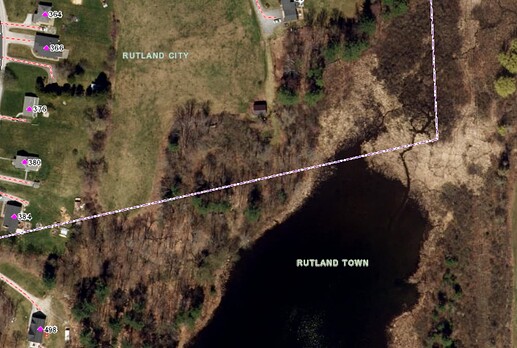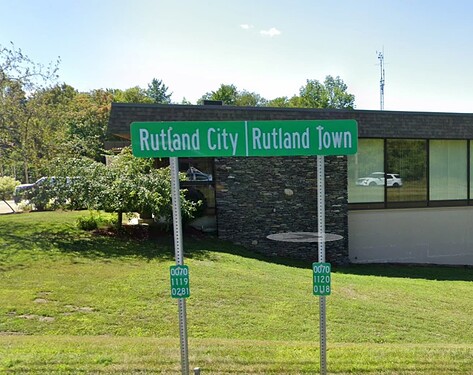Answers to several questions from ZeLonewolf and ezekielf:
As far as I know, all the municipalities in New York are officially named ‘City of XXX’, ‘Town of XXX’, ‘Village of XXX’. (“County of” XXX, too, for that matter, but it’s commoner to refer in speech to “XXX County.”) I sometimes hear “XXX City” or “XXX Village” but virtually never “XXX Town.” And it doesn’t sound odd at all to say “the Village of Cedarhurst” or “the City of Long Beach”. (although that’s mostly referring to the respective governments, since just “Cedarhurst” or “Long Beach” are unambiguous).
What USGS used to do - was to place both the Town and City in Roman capitals in the area, leave the Town line unlabeled, and label the City line with ‘CORPORATE BOUNDARY’ or some variation thereof. Where two municipalities other than Towns joined, the boundary might get “[name of City or Village] CORPORATE BOUNDARY” on either side. This convention gave the impression to a casual reader that Cities were a lower admin_level than Towns (they are not), but avoided the anomaly of a boundary between “Rye” and “Rye”.
It’s hard to read for Rye because it’s so feature-dense, but the same situation for Plattsburgh (just over the lake from ezekielf) can be seen at CalTopo - Backcountry Mapping Evolved
What do the locals call them? It depends.
It so happens that enclave cities like Rye and Plattsburgh generally have a shared identity with the towns of the same names. Someone living in Town of Rye would usually say that they live in “Rye”, and then clarify “but outside the city limits” if it’s actually relevant.
That’s not always the case. The strongest counter-example is probably the Town and Village of Hempstead. Ask an inhabitant of the Town of Hempstead where they live, and you won’t hear ‘Hempstead’ from anyone who doesn’t live in the Village of Hempstead. You’ll hear the name of another Village or Hamlet within the Town. Say that they live in ‘Hempstead’, and you’ll hear, “well, it’s Town of Hempstead, but it’s Inwood!” (or wherever).
I’ll say that I live in ‘Niskayuna’, which is a Town, but that’s because Niskayuna doesn’t have any villages or hamlets within its bounds and does have a local identity.
I’ll say that my daughter lives in ‘Scotia’ even though she’s outside the village limits, because she’s only a few blocks outside, in a densely built-up area contiguous with the village proper - in fact, she’s closer to downtown than a lot of people who live in the village. To say she lives in ‘Glenville’ would be confusing, unless I said ‘Town of Glenville’. And it doesn’t actually matter to anyone whether she’s inside the village or not, until it comes time to pay the taxes.
I’ll say that my brother lives in Narrowsburg, even though he’s far outside the village, because the Town of Tusten has no local identity to speak of. There was once a Tusten settlement, and there’s still a hamlet of the same name, but the former center of the town is now largely abandoned. Narrowsburg is the nearest post office.
Residents of the rural towns will often speak (incorrectly) of “Tusten Township” rather than “Town of Tusten”. And Towns in New York function akin to Townships in some other states.
Towns are basicallty political entities (they’re the form of government you get if you haven’t voted to incorporate) that may or may not actually have a strong local identity. If you’re mapping political boundaries, you need to have them (and the official names, in my opinion, are Just Fine for that). If what concerns you is ‘places’, then those places may or may not be towns.

